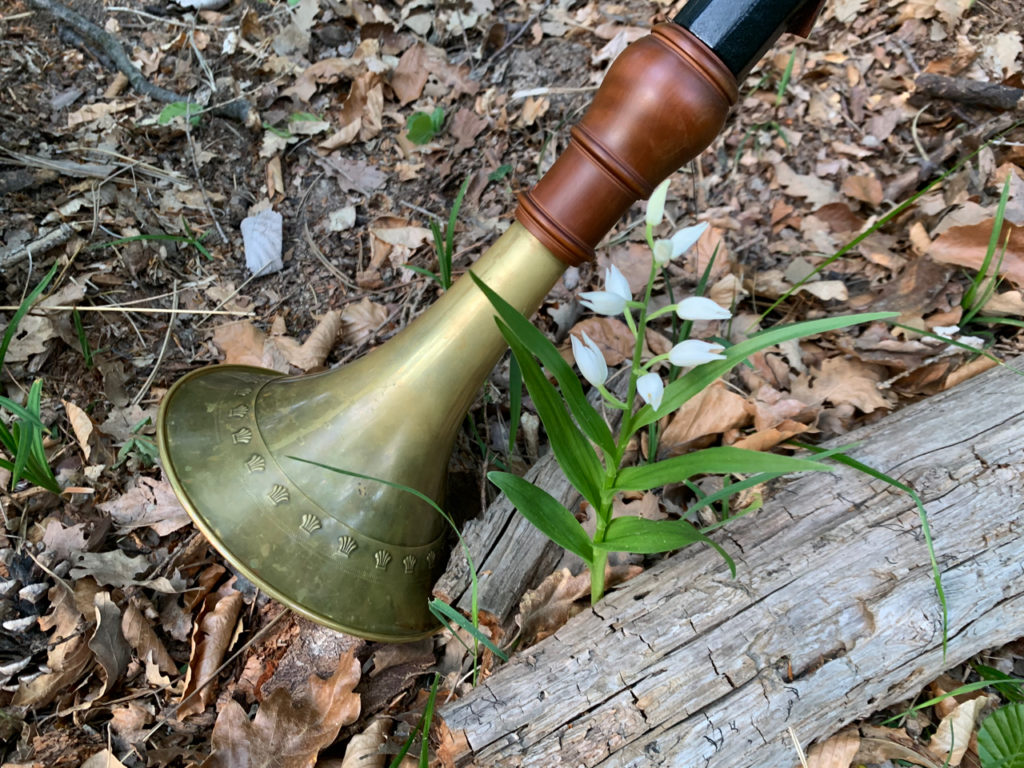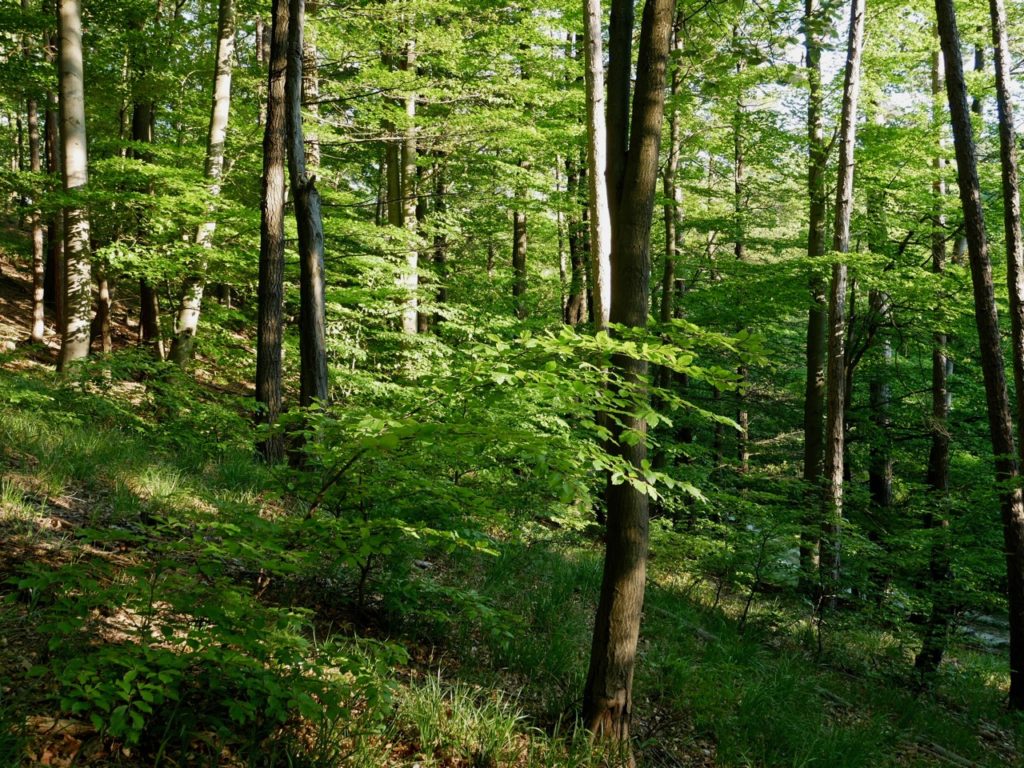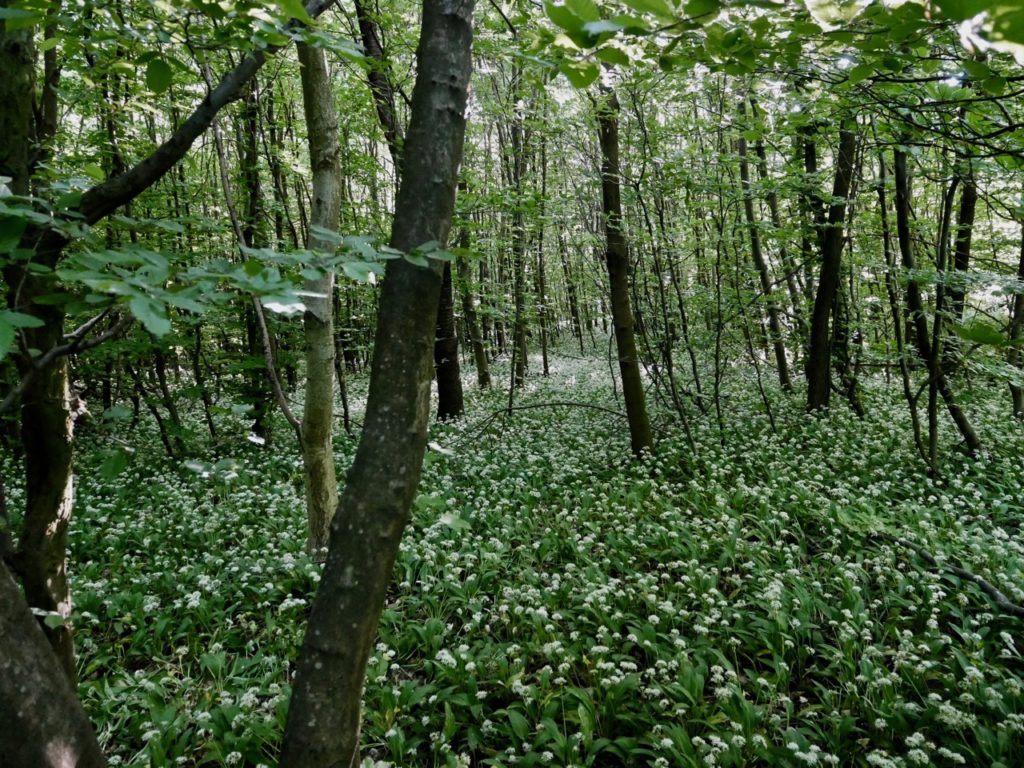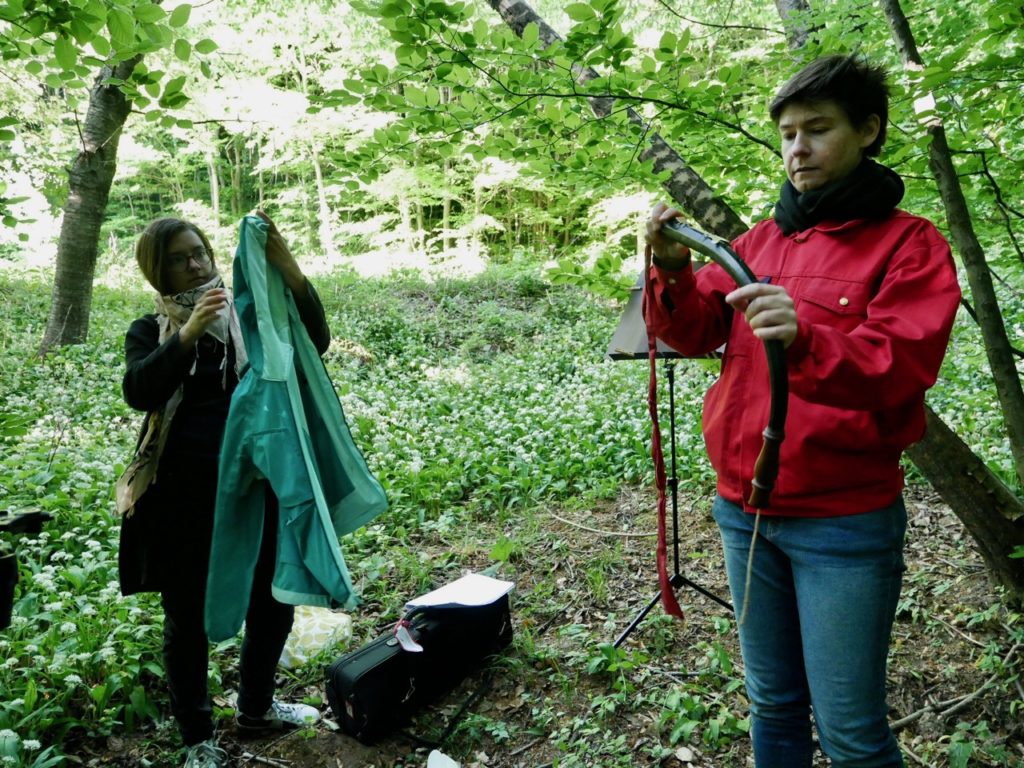
03/05/20 Pia Palme
In the forest near my house, white blossoms cover the ground everywhere. Strong smell of wild garlic. Two instruments, oboe da caccias, sing in the late afternoon. The setting sun sends rays of light through the leaves, onto the field of whiteness. The caccia instruments sound surprisingly good in this natural environment – as if they were made for this kind of space. The forest acoustics are magnificent today: even small tappings, gurgles, and key sounds are clearly audible and carry well over distance. Trees offer an excellent workshop space for us during these COVID-19 restrictions.
This is a collaboration with the oboists Molly McDolan and Ana Inés Feola, two experts in historical oboe instruments with an interest in contemporary music and performance techniques.
Over the last weeks, we have been experimenting, rehearsing, and recording. We worked on an updated version of the duo EINS & DOPPELT. The original version from 2019 has been extended by a new middle section which opens up space for improvising.
We go out for a short hike into the Vienna Woods, looking for a good spot to set up our gear. We want to perform, record, and film. Soon, we begin to feel at home in our pungent studio hall. Together, we also improvise – McDolan and Feola with their oboe da caccias and I with a small camera. We do some more walking and check out other terrains with different kinds of growth and trees. Performing, filming, recording, experimenting, we continue until sundown. Except for a few hikers, there is no human audience.

I’m in love with the oboe da caccia. It’s black leather covering is pleasant to the touch. The flexible, almost vocal, and nasal sound evokes ancient images and blurred memories in my mind. It stimulates my imagination. In EINS & DOPPELT there is reference to J. S. Bach and Baroque splendor. Molly McDolan and Ana Inés Feola simultaneously execute sweeping movements, a technique I developed for this instrument in 2009. The sweeps extend from Baroque performance techniques such as the flattement, in which pitch is influenced by “shading” the finger hole directly. Thanks to such brilliant collaborators, it was possible to try out several versions of the techniques used in the piece; we also experimented with various improvisational elements and with more dirty sound textures. Their instruments are very rare – I feel lucky to know such excellent musicians who use historical instruments and who like to experiment with modern techniques.
The video here shows an excerpt and deconstructed version of the piece, with some touches of electronic processing.
We talk very little and listen a lot; nourishment for hungry musicians.



